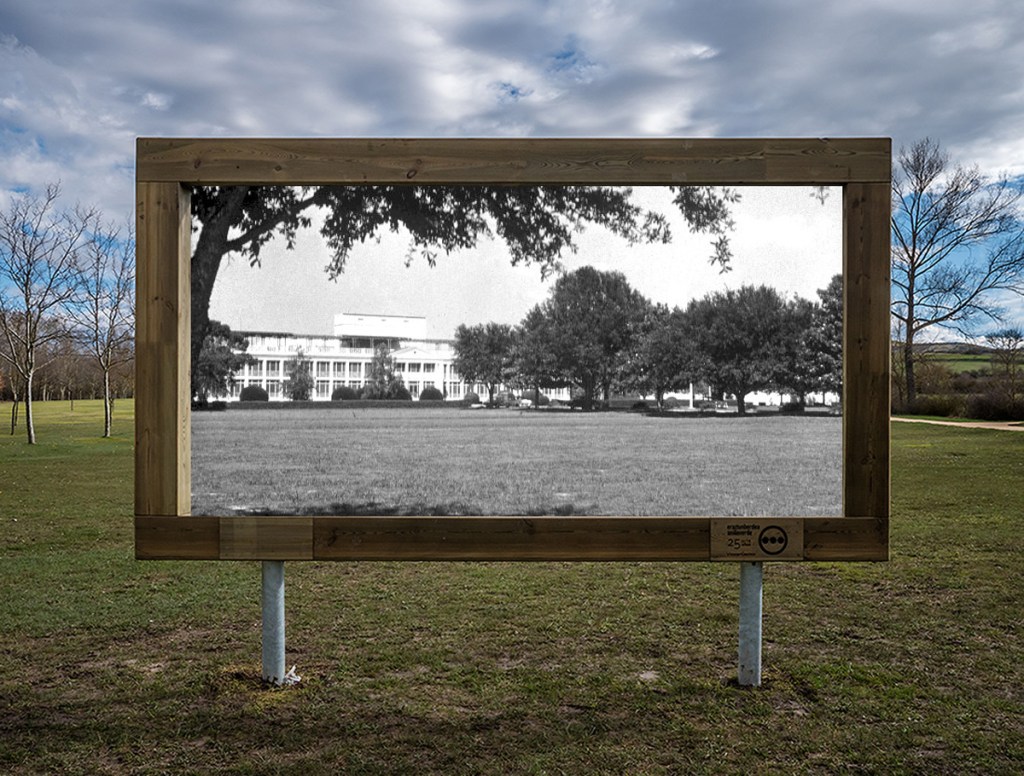New Iberia author looks at family’s past in leprosariums with ‘Naming the Leper’
Published 6:30 am Sunday, March 15, 2020

- Looking back on the Leprosarium: 1956 photo of Carville’s hospital inside a photo of an outdoor frame installed at the 25th anniversary of the Green Ring of Vitoria, Basque Country, Spain.
Christopher Manes knows all too well what leprosy has done to his family.
Manes’ newest book “Naming the Leper,” is a documentary poetry book that traces five of his relatives — his great, great grandfather Edmond, his sisters Marie, Amelie and his brothers Nobert and Albert — and their trials and tribulations with leprosy.
“What it does, it traces them through their admission in Carville, Louisiana,” Manes said. “Carville is the city but it also is the name that was given to the leprosarium by the patients.”
Instead of telling people they were in a leprosarium, they would just tell those who asked they lived in Caville, so it became the epicenter for people who were suffering from leprosy.”
A leprosarium, basically, was a place that housed those who suffered from the disease of the same name — leprosy, or Hansen’s disease.
People with leprosy during the early 1900s were treated as a prisoner because they lived at the leprosarium, so they couldn’t leave to vote, and were denied the right to see their children or spouses and family members outside of Carville.
Treatment during the early years of the leprosarium by all accounts the treatment was ineffective.
“They didn’t start to research drug therapy until the 1940s,” Manes said. “They started to see results in the ’40s and it really wasn’t until the ’80s that we have some of the more modern drugs we used today that have actually been in effect.”
Leprosy, according to Manes, is a disease caused by the bacterium Mycobacterium leprae and can today be repressed through a combination of drugs.
“It attacks the nervous system and can lead to disfigurement in the sense that people with the diseases will or for example lose feeling in their legs or extremities,” Manes said. “It makes the extremities prone to scars, burns or cuts that won’t heal.”
As a consequence of those injuries, the infections may take over, and the person often reaches a state where a body part may have to be removed.
Though diabetes and leprosy are not linked together, many people in the leprosarium during that time also had diabetes, Manes said.
People with leprosy often deal with a lot of other diseases, too, he said, so those diseases also affect that person’s health.
Symptoms of leprosy can be as simple as a sore that looks no different than others on the skin, or can at times appear as a rash.
“But again, it’s a nerve disease versus a skin disorder,” Manes said. “For instance, the leprosy of the Bible is more likely skin diseases, it’s not necessarily nerving damage.”
Manes will be at this year’s Books Along the Teche Literary Festival on Saturday, April 4, along with his book, “Naming the Leper.”
The New Iberia native said he realized what he was missing when he wrote his 2020 book — he hadn’t heard his family members before and what they were trying to say.
When he wrote his master thesis “Regardez,” he was bent on telling the story of how he heard the story.
“I don’t think I truly analyzed what they wrote,” Manes said. “Because what they wrote was ‘I’m lonely,’ and ‘I don’t like this place,’ as well as ‘This is truly a leper’s place.’”
The story that had come down to Manes was that his great grandparents had this great love story and if only they could have been together, but that’s not what their words said.
Manes realized that after reading their letters and not his thesis, what he missed was the feeling in their voice, the anger, frustration, the sense of abandonment, a motivating factor to tell their story.
“Their letters, their words say something different,” Manes said.





